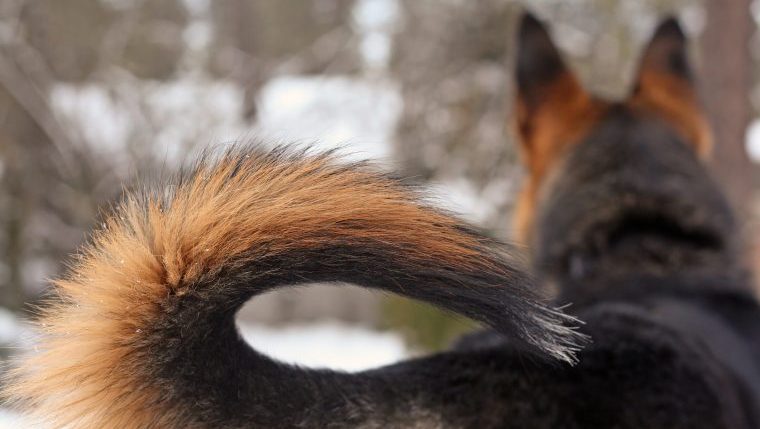
If you thought dogs’ tails served some kind of corporeal purpose that facilitated impressive acts of physical prowess, think again. New research indicates that the wagging appendages on our four-legged friends are actually less about locomotion and more of a communication tool.
Dog Tails the Subject of Study
An international group of researchers took a deep dive into the function of dogs’ tails after studies on other animals, like squirrels and lizards, showed that their tails served functional and protective features, like maintaining animals’ balance, assisting with tricky hunting maneuvers (like making quick, tight turns to catch prey), or helping them right themselves after falling from trees.
Since dogs don’t often leave the ground, scientists wanted to find out if tails facilitated movement, assisted in swatting off nuisances like flies, or if, instead, they were actually a conduit of body language.
Dr. Ardian Jusufi studies animal locomotion at the Max Planck Institute for Intelligent Systems in Stuttgart. He and his team created a mathematical model that allowed them to analyze what happens when dogs jump, move their legs and tails, and use their torsos.
“Tail wags the dog is unsupported by biomechanical modelling of Canidae tails use during terrestrial motion,” is the title of their paper. Though it has not been peer-reviewed, the researchers concluded that tail movements appear to have no effect on a jumping dog’s trajectory. This means that tails might not be as essential for canine agility as they are for other animals.
“It appears the inertial impacts that tail movement has on complex manoeuvres such as jumping, have little to no effect,” the study authors wrote. “The utilising of the tail during jumping … achieves very low amounts of centre of mass movement across all species with the largest being under a single degree.”
They continued, “We believe that this implies that dogs utilise their tails for other means, such as communication and pest control, but not for agility in manoeuvres.”
Body Language
Previous research has shown dogs use their tails to convey all sorts of things, from friendliness and appeasement to dominance and fear. Dogs use their tails to express confidence, a willingness to play, detection of a threat, or anxiety. We all know what a tail tucked between the legs means, while the side-to-side sway is generally interpreted as amiability or happiness.
The next time you see your pup, check out its tail and see what it’s saying!





